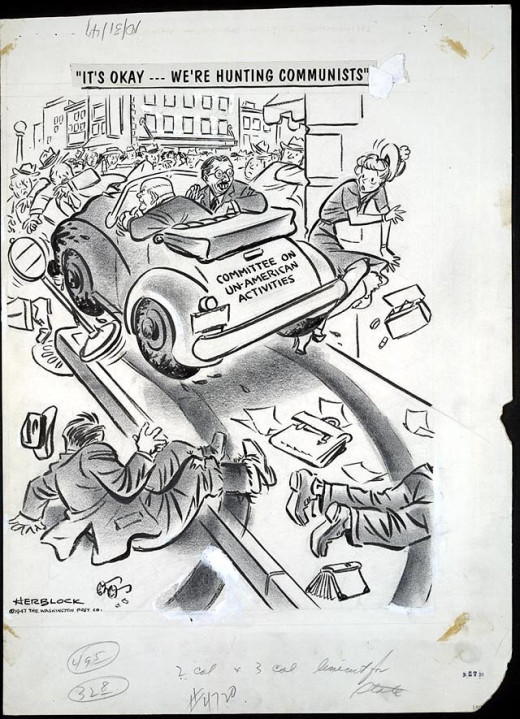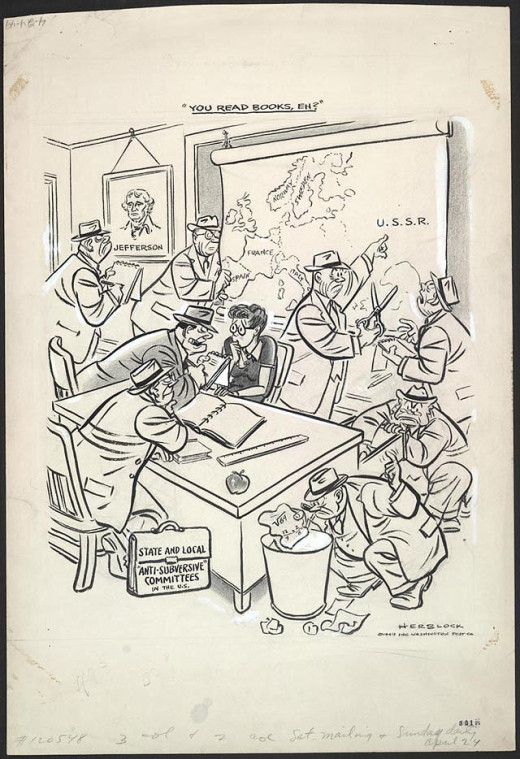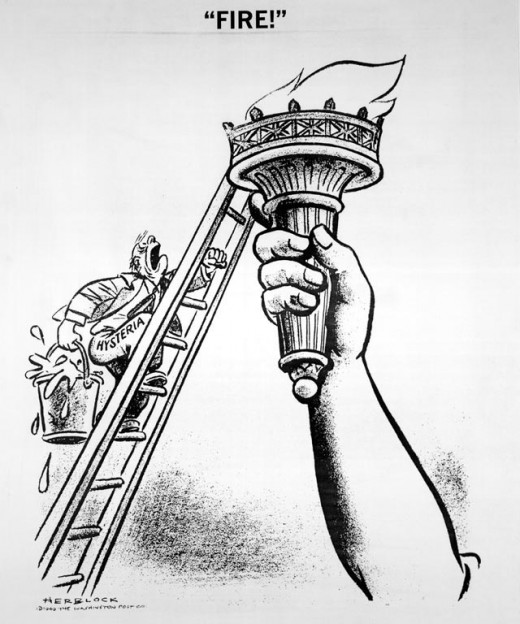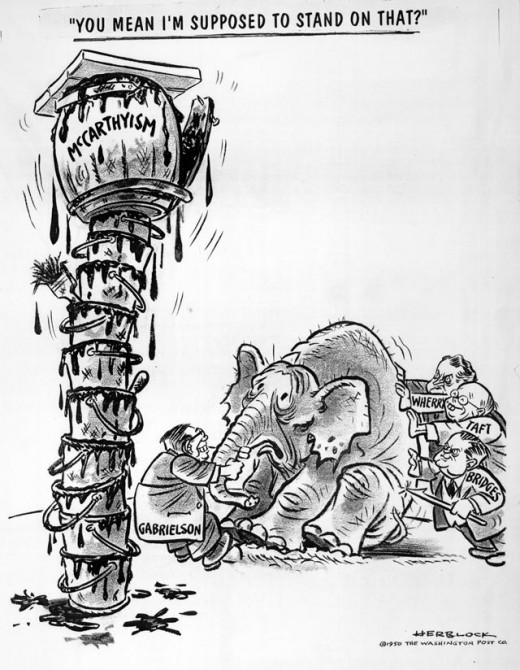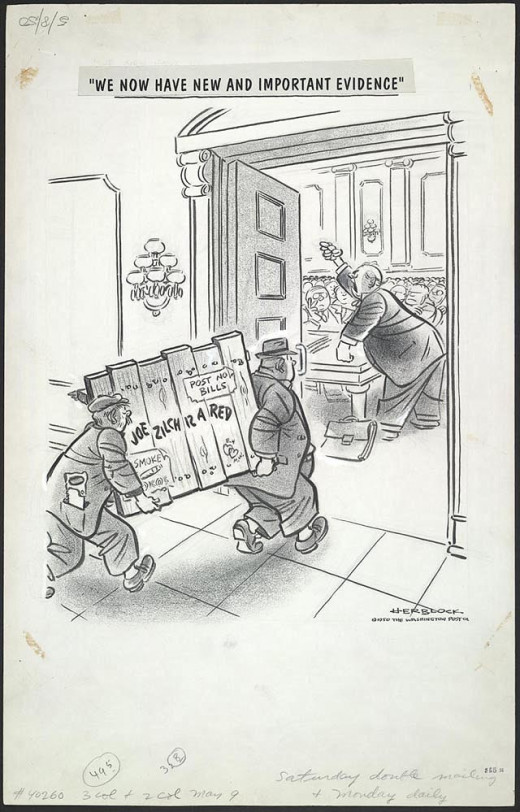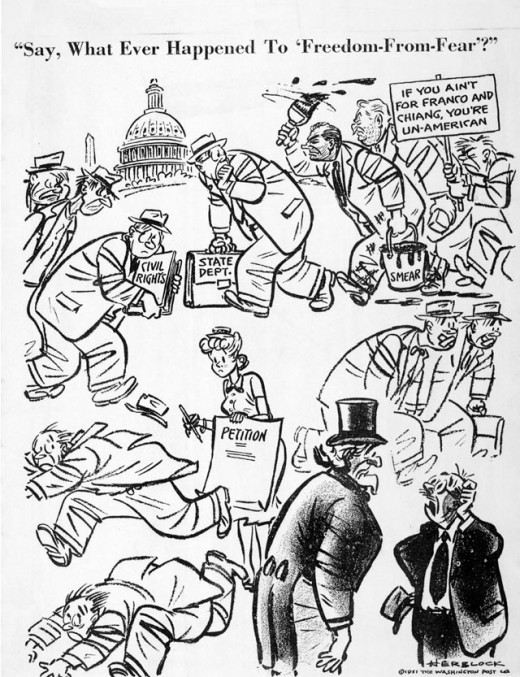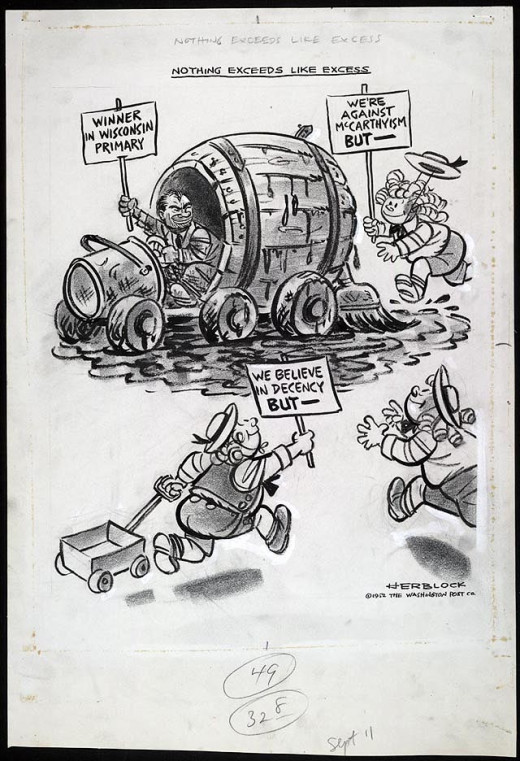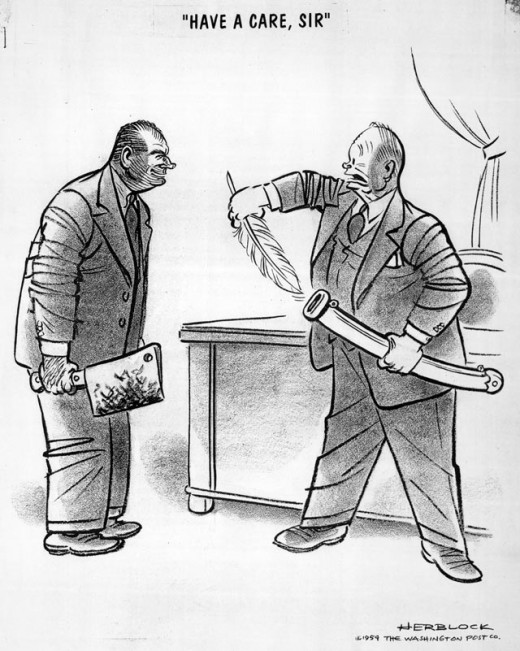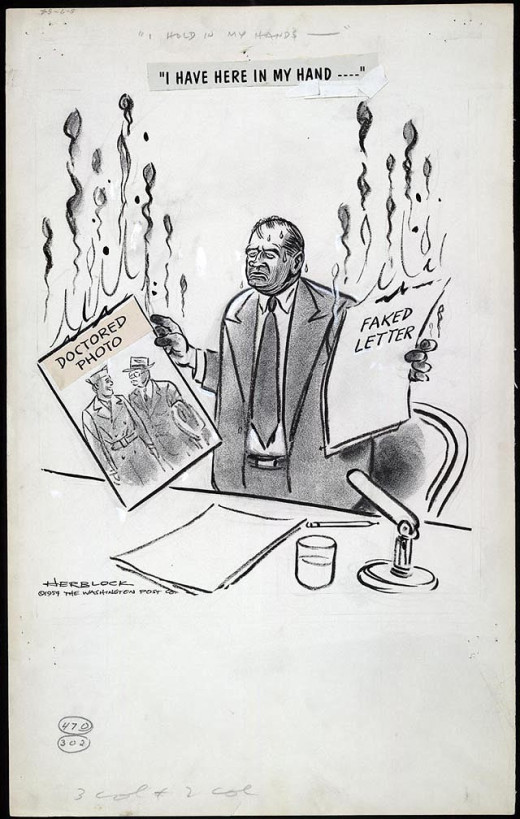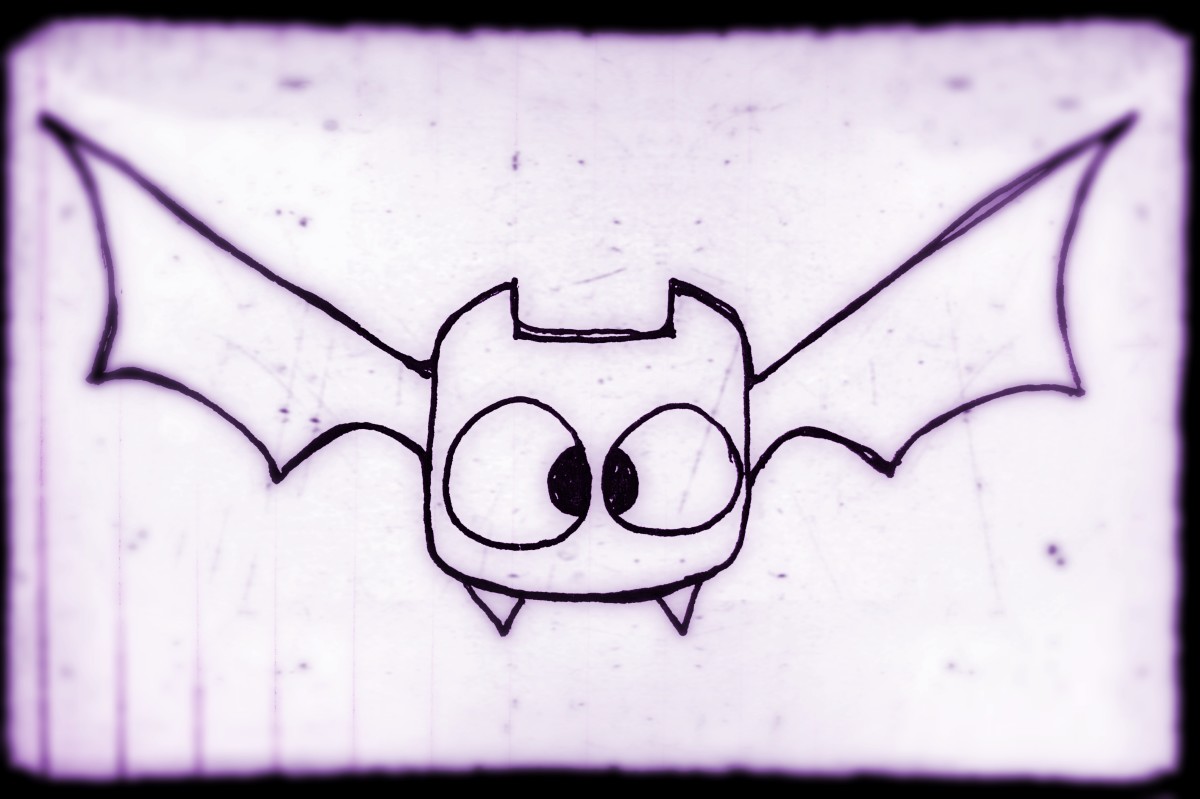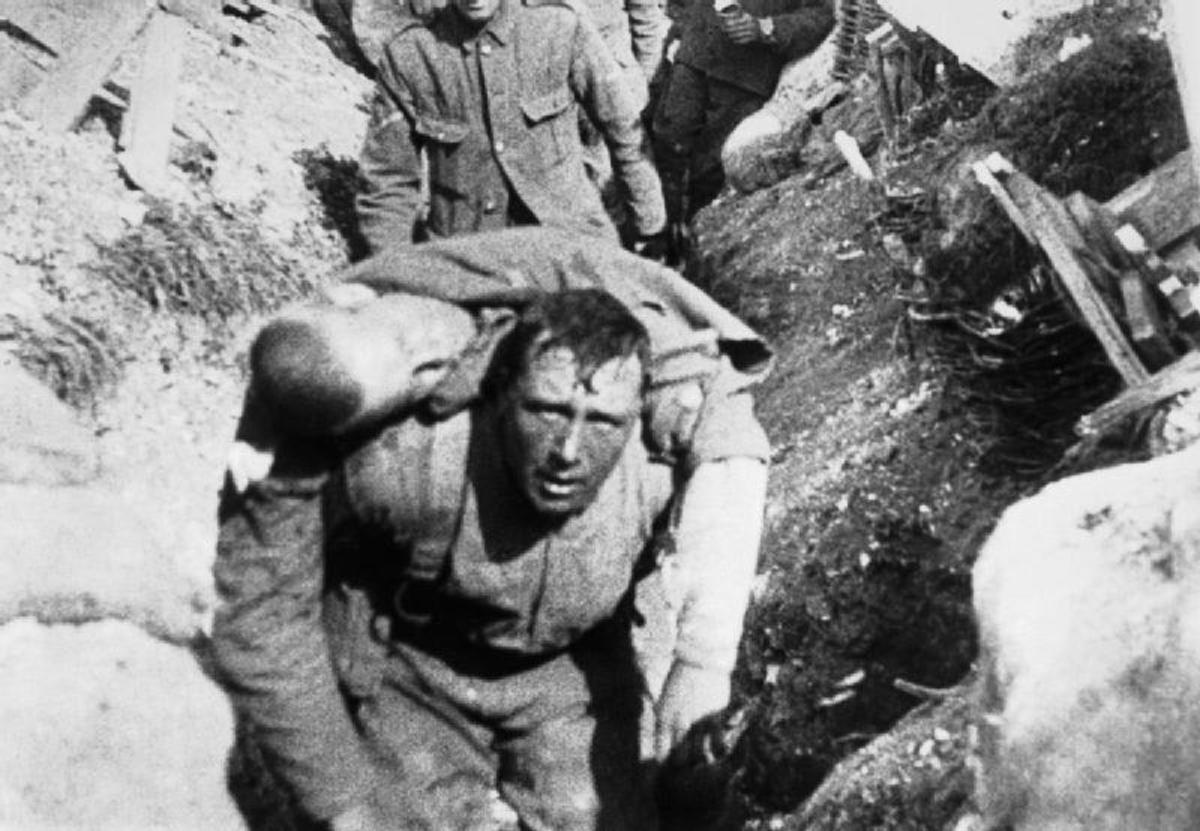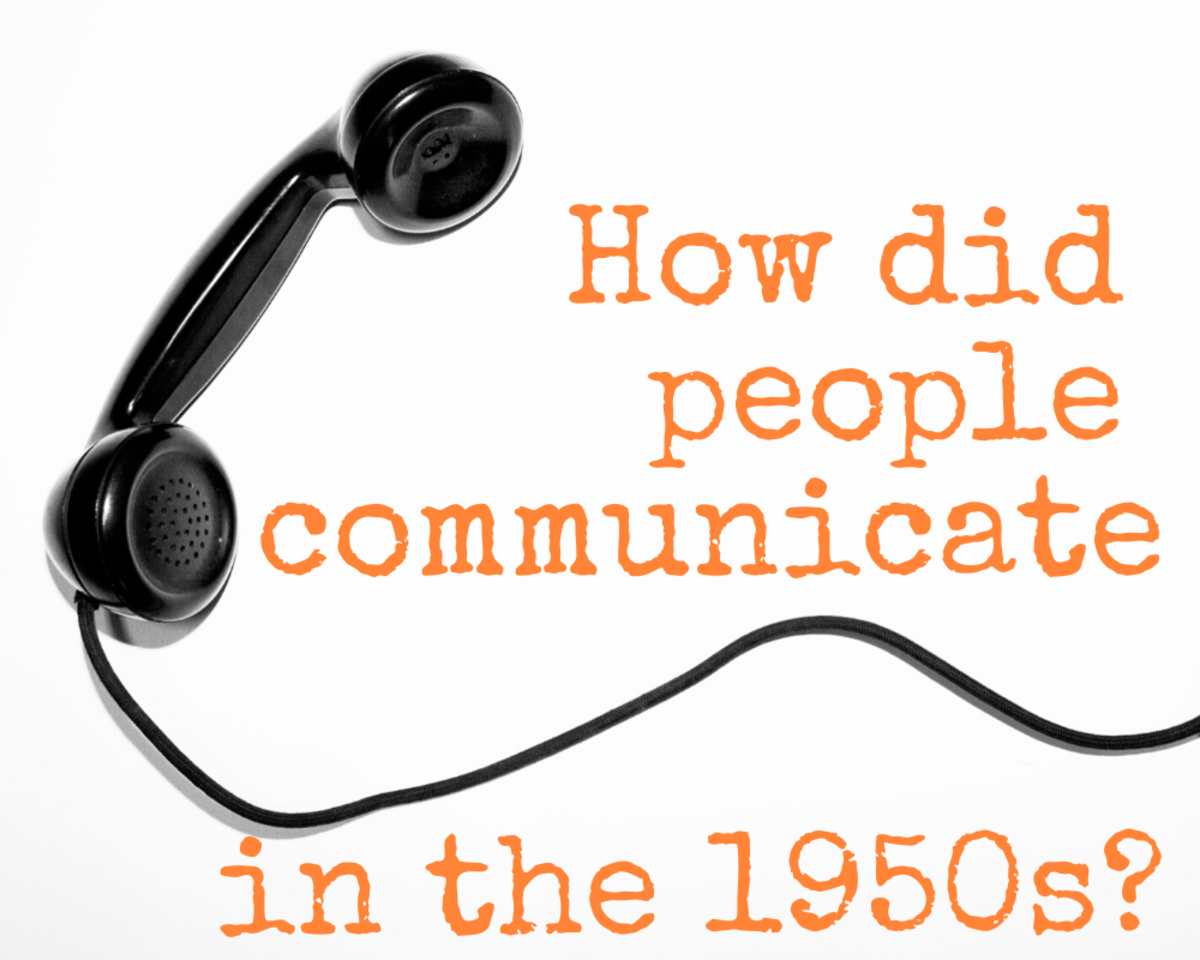- HubPages»
- Education and Science»
- History & Archaeology»
- History of the Modern Era»
- Twentieth Century History
Herblock vs Joseph McCarthy

Herbert Block – Herblock – was the political cartoonist for the Washington Post from 1946 until 2001. During his career he won three Pulitzer Prizes for editorial cartooning (1942, 1954, and 1979) and shared a fourth with the rest of the staff at the Washington Post for their coverage of Watergate. In addition he received several honorary degrees and dozens of journalism prizes and, in 1966, he was selected to design the postage stamp commemorating the 175th anniversary of the Bill of Rights.
His first cartoon appeared in the Chicago Daily News on April 24, 1929 and his last in the Washington Post on August 26, 2001. His career spanned Black Friday and the Great Depression to 9/11. He chronicled the 20th century through the use of the editorial cartoon. He followed his instincts, whatever the consequences; oftentimes he was at the forefront standing up against very dangerous men and the tides of history. In some ways he was the embodiment of the American conscience. Over his 70+ year career a lot of people wished he’d go away.
Katharine Graham, on his 50th anniversary at The Post, said of him: ''Underneath his genius for cartooning lies a modest, sweet, aw-shucks personality. Underneath that lies a layer of iron and steel. For publishers and editors over him, or under him as it would be more accurate to say, it's like having a tiger by the tail.''
One of those who faced the wrath and wit of Herblock was the junior senator from Wisconsin Joseph McCarthy. He went after McCarthy like no other man with the possible exception of Richard Nixon, but then Nixon’s public career was much longer than McCarthy’s.
In the aftermath of World War II, relations between the United States and the Soviet Union deteriorated and the Cold War ensued. A fear of communism permeated the country; a fear that communists might try to subvert schools, labor unions, and other institutions. Government agencies and private groups began to look for evidence of subversive activity. In this climate of fear and suspicion, the House Committee on Un-American Activities, which Herblock had opposed since its inception in the 1930s, became active. McCarthy used the political climate of the time to advance his cause. He became the symbol, the rallying point of the anti-communist crusaders in America.
As a lifelong critic of folly and injustice, Herblock's Washington Post editorial-page cartoons, which showed a sneering, stubble-faced McCarthy, were among the few public expressions against his rampant demagoguery. It was said that McCarthy shaved twice a day to avoid resembling the caricature. However, Herblock was taking an incredible career risk in his battle with McCarthy considering how powerful the senator was to become.
Herblock was out there alone against McCarthy for a considerable amount of time. He had cartoons on the fear and scare tactics in Washington going back to 1947 and he coined the term “McCarthyism” in 1950. Edward R. Murrow’s famous television show exposing McCarthy was not broadcast until 1954. Harry Truman had no time for McCarthy and called him the “Kremlin’s greatest asset,” but he was a lame duck bringing two decades of Democratic administrations to a close. Dwight Eisenhower, arguably the most respected man in the country as well as the President, would not publicly criticize McCarthy. For four years McCarthy attacked communism and for four years Herblock attacked McCarthy and his heavy-handed tactics.
In June 1954, McCarthy was censured and in December condemned by the Senate.
